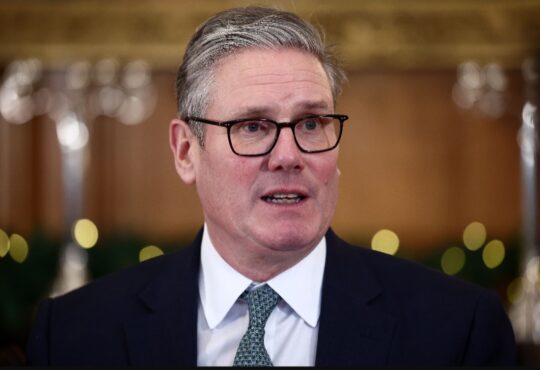
Chancellor Rachel Reeves is being accused of hiding the true scale of the UK’s debt, with banking expert Bob Lyddon claiming that she is downplaying a £200 billion financial shortfall to justify even more government borrowing.
Lyddon has criticized what he calls “the Blob”—a term he uses to describe the Treasury, the Bank of England, the Office for National Statistics, the Office for Budget Responsibility, and Downing Street—for misleading the public about the country’s financial health. He believes that Reeves is at the center of a strategy designed to make borrowing look more reasonable than it actually is.
One of the biggest concerns, according to Lyddon, is how the Bank of England’s massive losses are being presented as an asset in official debt calculations. He described this as a “conjuring trick” that falsely suggests the UK has more financial flexibility than it really does.
The Office for National Statistics currently estimates the UK’s public sector net debt at £2.62 trillion as of December 2024. However, Lyddon argues that this number does not reflect the real scale of financial obligations, with a £200 billion “black hole” in the figures. He claims that £95 billion of this amount is actually a loss, not an asset, and that the rest remains unexplained. He believes that instead of reducing the official debt figure, the Bank of England’s losses should actually increase the total debt.
This type of accounting trick, according to Lyddon, has helped the government justify borrowing more money for projects such as the reopening of Robin Hood Airport near Doncaster, a scheme estimated to cost £138 million. The funding includes a £60.6 million council loan and a £44.6 million rent deferral loan, set to be paid by spring 2026. The government lists these investments as public assets, which allows them to offset the debt incurred to finance them.
Lyddon warns that this approach misleads the public into thinking the UK’s finances are under control, when in reality, the country is falling deeper into debt. He believes that the government’s ability to keep borrowing relies on international confidence, and if the true scale of debt were revealed, this confidence could collapse.
In addition to the £200 billion shortfall, Lyddon pointed to £100 billion in outstanding debt from New Labour’s Private Finance Initiative, as well as debts from public corporations and local governments, which he believes should be included in a more accurate assessment of the UK’s financial position.
Another concern is the government’s decision to abandon the General Government Gross Debt metric, which had previously been required under the Maastricht Treaty. The Office for National Statistics announced in December 2024 that it would stop publishing the UK’s debt and deficit statistical bulletin, which included the General Government Gross Debt metric. The final release of this data is scheduled for April 30, 2025, after which it will be merged into the broader Public Sector Finances report in June 2025.
Lyddon sees this as a deliberate move to obscure the real extent of government debt, making it harder for the public to see the full picture.
Rachel Reeves has pledged not to borrow money for day-to-day spending and to reduce debt as a share of national income by the end of the current parliament. However, rising borrowing costs have put significant pressure on government finances.
In March 2025, UK government borrowing surged to £17.8 billion, raising concerns that Reeves may have to make tough decisions to stick to her financial promises.
Treasury Chief Secretary Darren Jones defended the government’s approach, insisting that economic stability is the top priority and that fiscal rules will not be broken. He said, “We will have an iron grip on the public finances.”
However, rising government borrowing costs—especially the increase in 10-year gilt yields—are making it more expensive to service the national debt. This could shrink the UK’s financial flexibility, making it harder to fund public services or cut taxes.
Economists warn that the UK’s “fiscal headroom,” previously estimated at £9.9 billion, could fall to just £5 billion due to factors such as higher global bond yields, weaker productivity, and slower labour supply growth.
Rachel Reeves is also waiting for a major announcement from the Bank of England, led by Governor Andrew Bailey, on whether interest rates will be cut. A rate cut could help ease borrowing costs, but if rates stay high, it could limit the government’s ability to manage debt effectively.
Lyddon argues that the UK needs to start with a realistic assessment of debt, which includes acknowledging the costs of failed investments, lingering PFI obligations, and the real financial impact of borrowing. He insists that anything less is a disservice to the public, as people deserve to know the true state of the UK’s finances.





